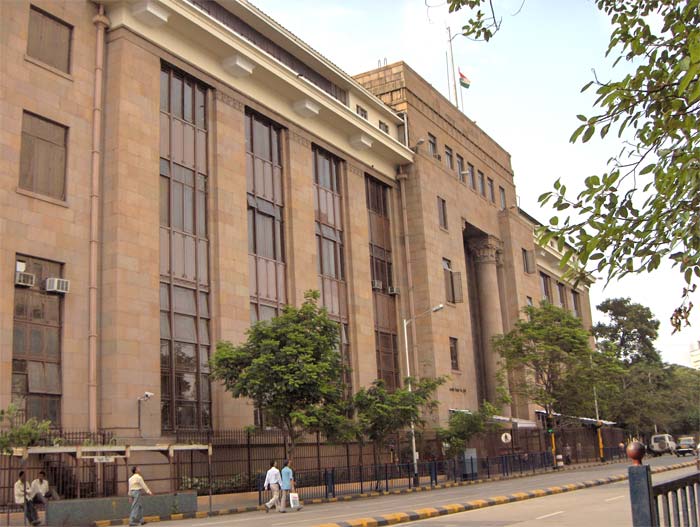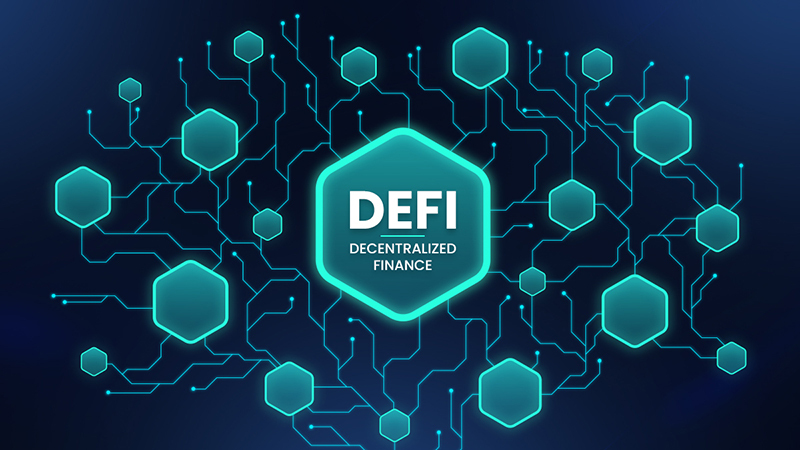This article was published as a part of the Data Science Blogathon.
Introduction
Today’s Internet is not perfect. We don’t have a native value settlement layer, nor do we have control over our data. Our data architectures are still founded on the idea of stand-alone computers, where data is centrally stored and maintained on a server and delivered or retrieved by a client, thirty years after the widespread use of the Internet. Every time we communicate online, copies of our data are transmitted to a service provider’s server, and we relinquish control over that data each time.
A potential future iteration of the internet known as Web 3.0 is built on public blockchains, a database best known for facilitating bitcoin exchanges. Web 3.0 is appealing because it is decentralised, which means that instead of customers using services that are mediated by businesses like Google, Apple, or Facebook, users themselves own and control portions of the internet.
Web 3.0 does not require “permission” from a central authority, which implies that central authorities cannot control who has access to what services. It also does not require an intermediary for virtual transactions to take place between two or more parties. Web 3.0 theoretically preserves user privacy better because these organizations and intermediaries conduct most of the data collecting.
Present Financial Systems
A financial system is a group of organisations that allow for the exchange of money, including banks, insurance firms, and stock exchanges. There are financial systems at the business, regional, and international levels. To finance projects for either personal consumption or productive investments and to seek a return on their financial assets, borrowers, lenders, and investors trade current cash. To determine which projects are financed, who funds projects, and the conditions of financial agreements, borrowers and lenders employ a variety of rules and procedures that make up the financial system.
Financial markets involve loan negotiations between borrowers, lenders, and investors. The economic goods exchanged in these markets are often some kind of money, whether it claims on current money (cash), claims on future money (credit), or claims on the possible future income from or value of real assets (equity). Derivative instruments are also included in these. Financial instruments known as derivatives are those that depend on the performance of an underlying real or financial asset, such as commodities futures or stock options. These are all exchanged in financial markets between investors, lenders, and borrowers under the standard rules of supply and demand.

Image: https://www.telegraphindia.com/opinion/the-reserve-bank-of-india-is-not-the-government-s-back-office-even-if-the-law-makes-it-seem-so/cid/1675839
All financial system includes a Finance Minister, The Central Bank of the Nation, other National Banks and other Financial Institutions like Regional Banks and Insurance Companies. These entities can control the financial system of a country. Most nations these days have a currency, and there is an international currency exchange rate. Globally, The US Dollar is usually considered a global currency. The thing is, central governments and banks can drive the system according to their wishes. The general public doesn’t have much say in this aspect. The interest rates of deposits and loan interest rates are all decided by banks. Most of the monetary policy is also decided by the banks and central banks.
The Change that might Come
The internet is experiencing a stunning shift right now. It is also becoming a more crucial infrastructure component for running businesses and providing services. The Semantic Web is the foundation of Web 3.0, a new Internet architecture that would make the web of the future far more dependable, resilient, and useful.
According to popular belief, Web 3.0 is a new kind of international social interaction, a decentralised, permissionless blockchain-based economy, and a new kind of information architecture.

Image: https://www.skalex.io/defi-the-future-of-finance/
Financial systems are always evolving. Although the Internet has revolutionised the way we live and work, it is still fundamentally an analogue system. New financial systems that are more integrated, effective, and secure have been developed using the Internet.
Web 3.0, a concept used to characterise a new generation of financial systems that have the potential to replace the current financial system, is a result of the development of the Internet. In that case, cryptocurrencies may replace fiat currency.
This phrase is frequently used in the context of banking to describe products that serve as both a digital platform for value exchange and tools for managing and exchanging value.
Why will web 3.o be beneficial?
Web 3 will bring a lot of changes to our present systems, some ways in which Web 3 will be beneficial for us:
- People will be able to depend more on Web 3.0 systems. More content creators will be freed by Web 3.0. Web 3.0 will provide users total control over their internet data using decentralised networks.
- It is open to everybody. Web 3.0 is subject to several sources of control. Decentralised apps (dApps) cannot be restricted or outlawed because larger corporations may lose control of the internet.
- Personalization on the web. Online 3.0 will be able to understand user preferences and let users personalise their web browsing, which will increase the effectiveness of your web browsing.
- More effective marketing and online presence. We can see better and more pertinent advertisements thanks to Web 3.0’s artificial intelligence (AI), which enables vendors to comprehend your purchasing preferences and provide goods and services that customers would find appealing.
- Less disruption of services. Because all data is maintained on dispersed nodes, decentralisation avoids account suspensions and service interruptions brought on by technical or other issues.
Two Major Aspects in which Web3 will change Financial systems are Defi and Cryptocurrencies. Let us discuss them in detail.
Decentralised Finance (DeFi)
Nearly all banking, lending, and trade facets are now controlled by centralised systems run by authorities and gatekeepers. Regular consumers must interact with various financial intermediaries to access anything from auto loans and mortgages to trading stocks and bonds.
The Securities and Exchange Commission (SEC) and the Federal Reserve determine the regulations for the world of centralised financial institutions and brokerages in the United States, and Congress periodically updates the regulations. We have the Ministry of Finance and Reserve Bank of India in India.
Consumers have limited direct access points to money and financial services as a result. They cannot avoid intermediaries like banks, exchanges, and lenders that benefit from each financial and banking transaction by taking a cut. To be part of this financial system, we must all pay.
- A new financial system called decentralised finance (Defi) is built on safely distributed ledgers that are comparable to those used by cryptocurrencies. The system eliminates the authority that financial institutions, including banks, have over money, financial goods, and financial services. It offers the potential to provide more accessible financial markets that are open, free, and fair to everyone with an internet connection.
- Decentralised finance removes middlemen by enabling individuals, corporations, and merchants to perform financial transactions using new technologies. Peer enables these systems to Peer Financial networks by using appropriate Connectivity, Software, and hard and information security protocols.
- You may lend, trade, and borrow using software that logs and validates financial transactions in distributed financial databases from any location with an internet connection. A distributed database allows access from several places, gathers data from all users, and verifies it using a consensus process.
- The blockchain technology that cryptocurrencies employ is used in decentralised finance. Blockchain is a distributed and secure database or ledger. The blockchain is operated, and transactions are handled by programmes known as dApps.
- The blockchain records transactions as blocks that other users later confirm. If all of these verifiers concur on a transaction, the block is closed and encrypted, and a new block is made with details of the old block inside of it.
A distributed database that maintains a continually expanding list of ordered entries, called blocks, is what a blockchain is. These blocks are connected using cryptography. Each block includes transaction information, a timestamp, and a cryptographic hash of the one before it.
Defi offers numerous customers several major advantages, including:
- It does away with the use fees that banks and other financial institutions impose.
- Instead of depositing your money in a bank, you store it in a secure digital wallet.
- Anybody may use it with an internet connection without authorization.
- Fund transfers are very rapid and convenient.
Cryptocurrency
A cryptocurrency is a group of binary data utilised outside of established financial and political organisations as a means of transaction via the Internet. It doesn’t have a tangible counterpart as coins and bills do. Since the debut of the first decentralised cryptocurrency, Bitcoin, in 2009, a large number of other cryptocurrencies have been developed.

Image: https://www.financialexpress.com/digital-currency/crypto-crash-latest-news-6-22-2022-how-top-cryptocurrency-prices-changed-today/2568862/
Cryptocurrencies are fundamentally decentralised digital currencies created for online use. Bitcoin, Ethereum, Bitcoin Cash, and Litecoin are some of the most widely used cryptocurrencies. The well-known cryptocurrencies Tezos, EOS, and ZCash are also available. Several are comparable to Bitcoin. Cryptocurrency enables worldwide, near-instant, 24/7, low-fee value transfers over the internet without using an intermediary like a bank or payment processor.
No central government body controls cryptocurrencies. Peer-to-peer networks of computers running free, open-source software are in charge of managing them. In general, anyone who desires to engage may.
Conclusion
Web 3.0 will undoubtedly create new markets, business models, and other uncharted opportunities. Because Blockchain is essential to Web 3.0, we will witness the fusion of cutting-edge technology, bringing the internet to a previously unheard-of level of efficiency.
- The financial industry will also be impacted. New clientele groups and marketplaces will be produced by Web 3.0. Organisations must be prepared to embrace change and take advantage of Web 3.0 since COVID-19 has already demonstrated how important innovation and tech adoption are to their ability to survive.
- Decentralized finance, or Defi, eliminates middlemen from financial transactions by using cutting-edge technology.
- Stablecoins, software, and hardware that supports the creation of apps are the elements that makeup Defi. Defi aims to eliminate the middlemen that are present in all financial transactions.
- A type of digital asset known as a cryptocurrency relies on a network that is dispersed among several computers. They can exist independently of governments and other central authorities thanks to their decentralised nature.
- Cheaper and quicker money transactions and decentralised systems that do not have a single point of failure are two benefits of cryptocurrencies.
We had a lot at how Web 3.0 can change the world of Finance. The future seems bright and optimistic.
The media shown in this article is not owned by Analytics Vidhya and is used at the Author’s discretion.





